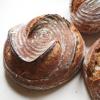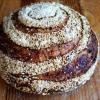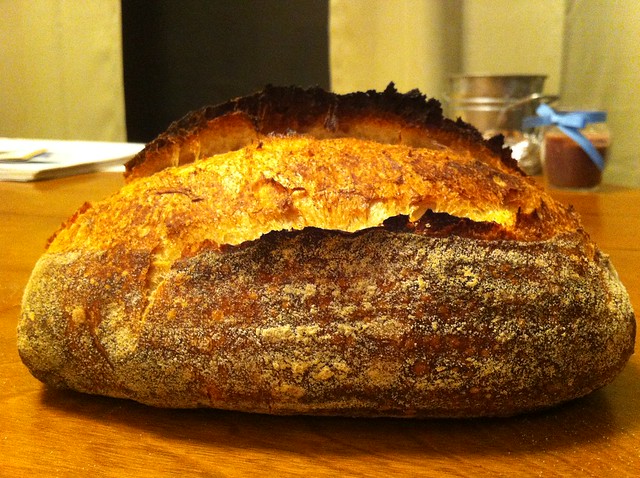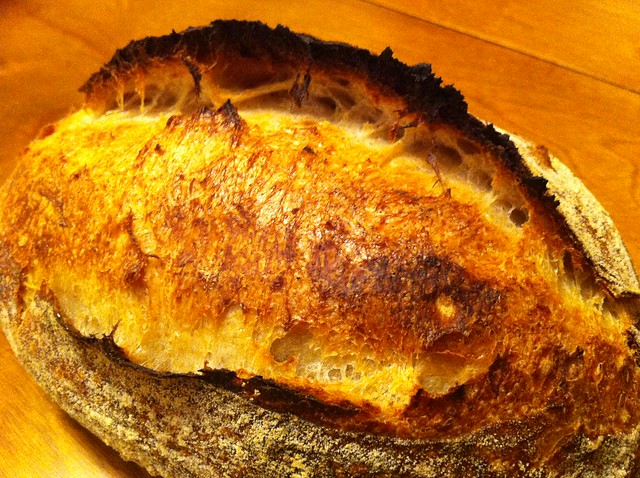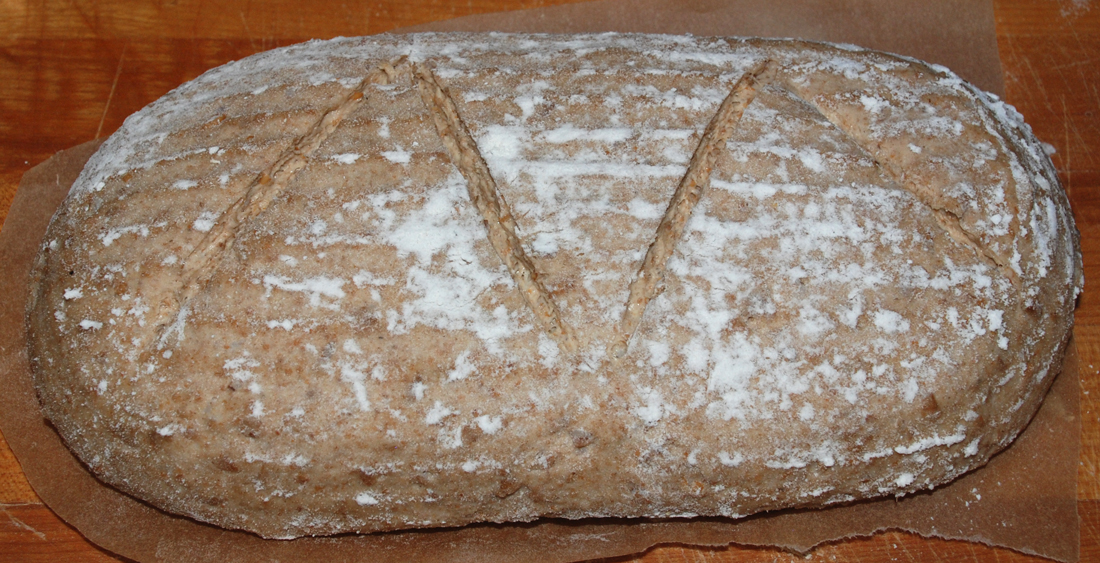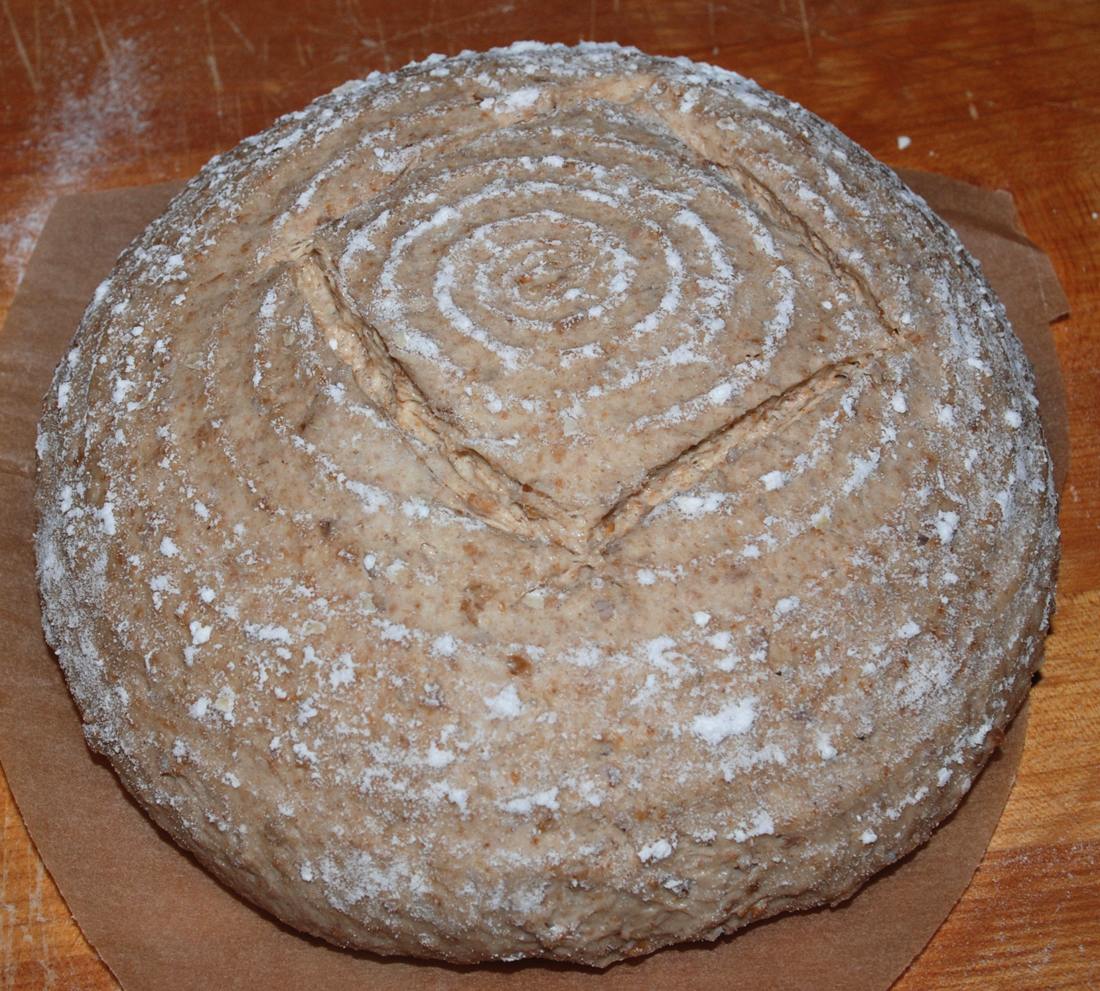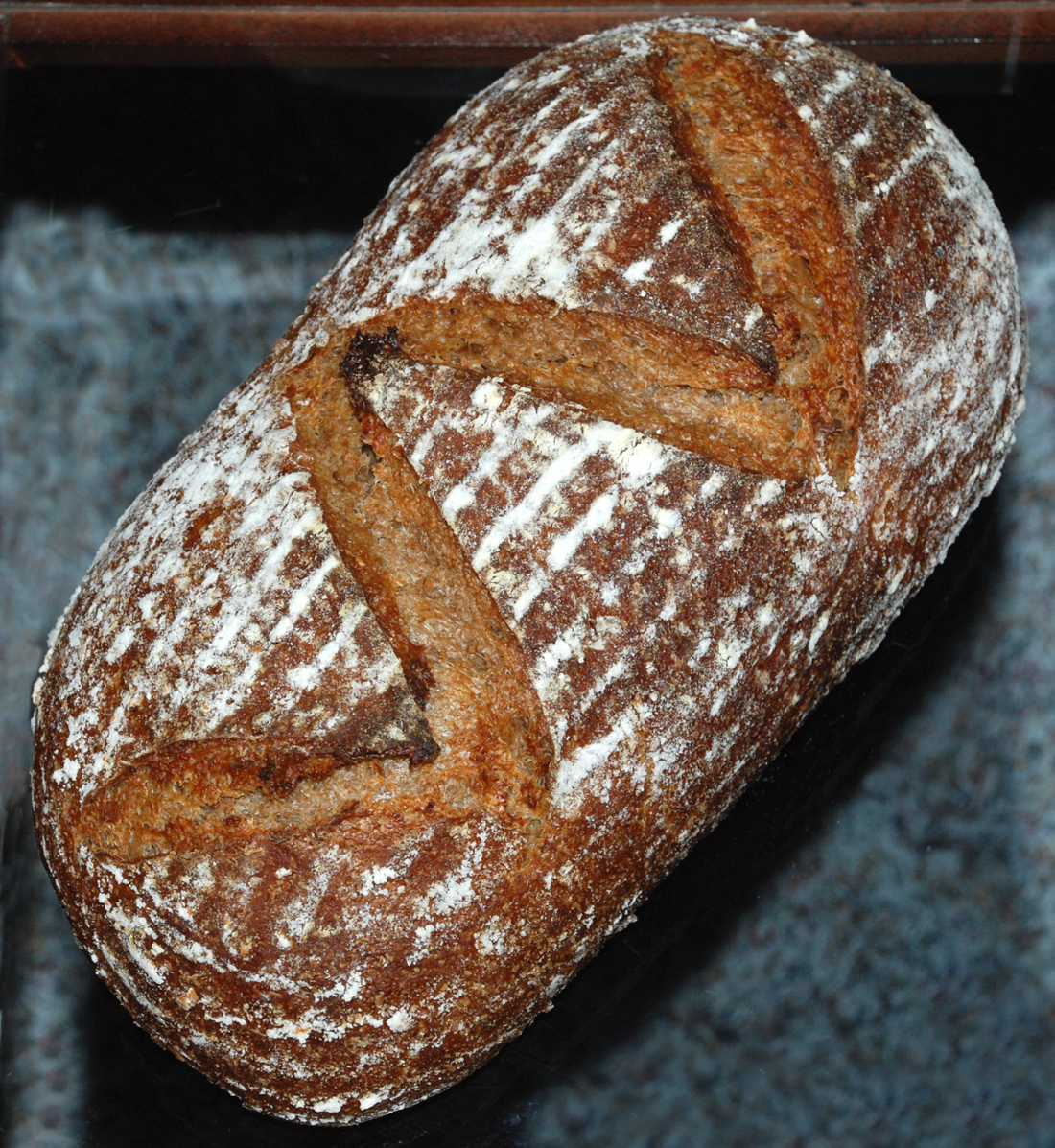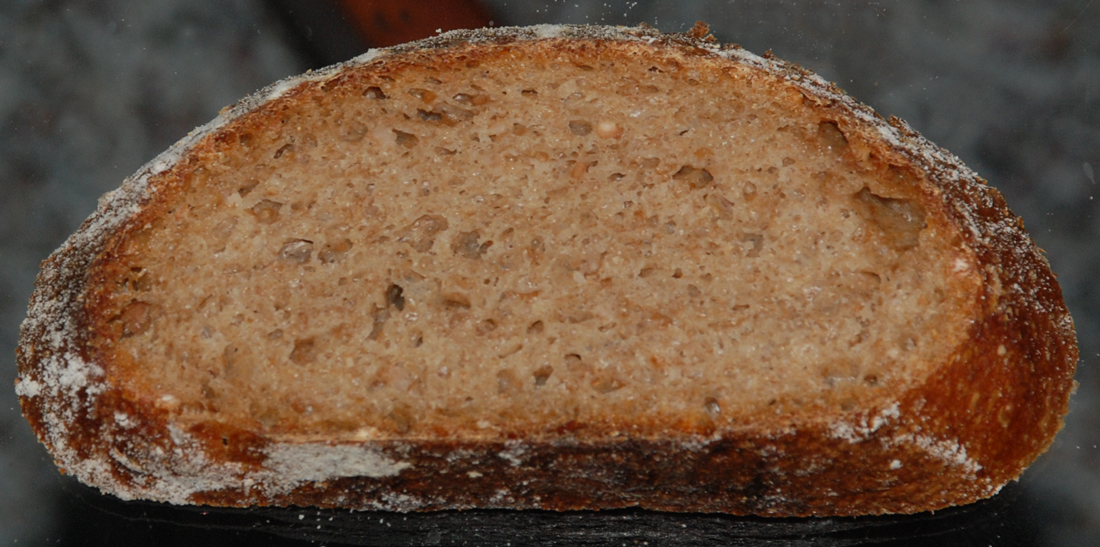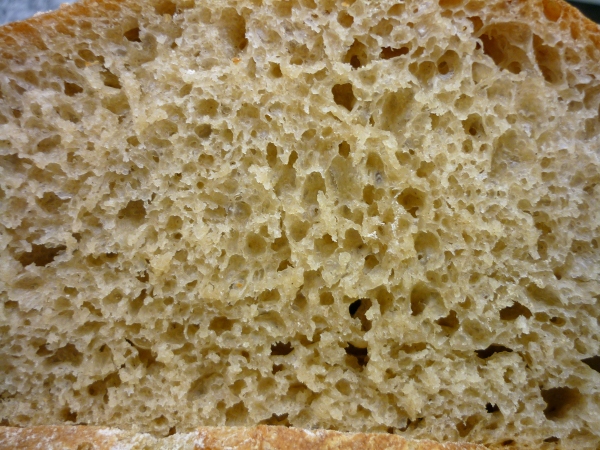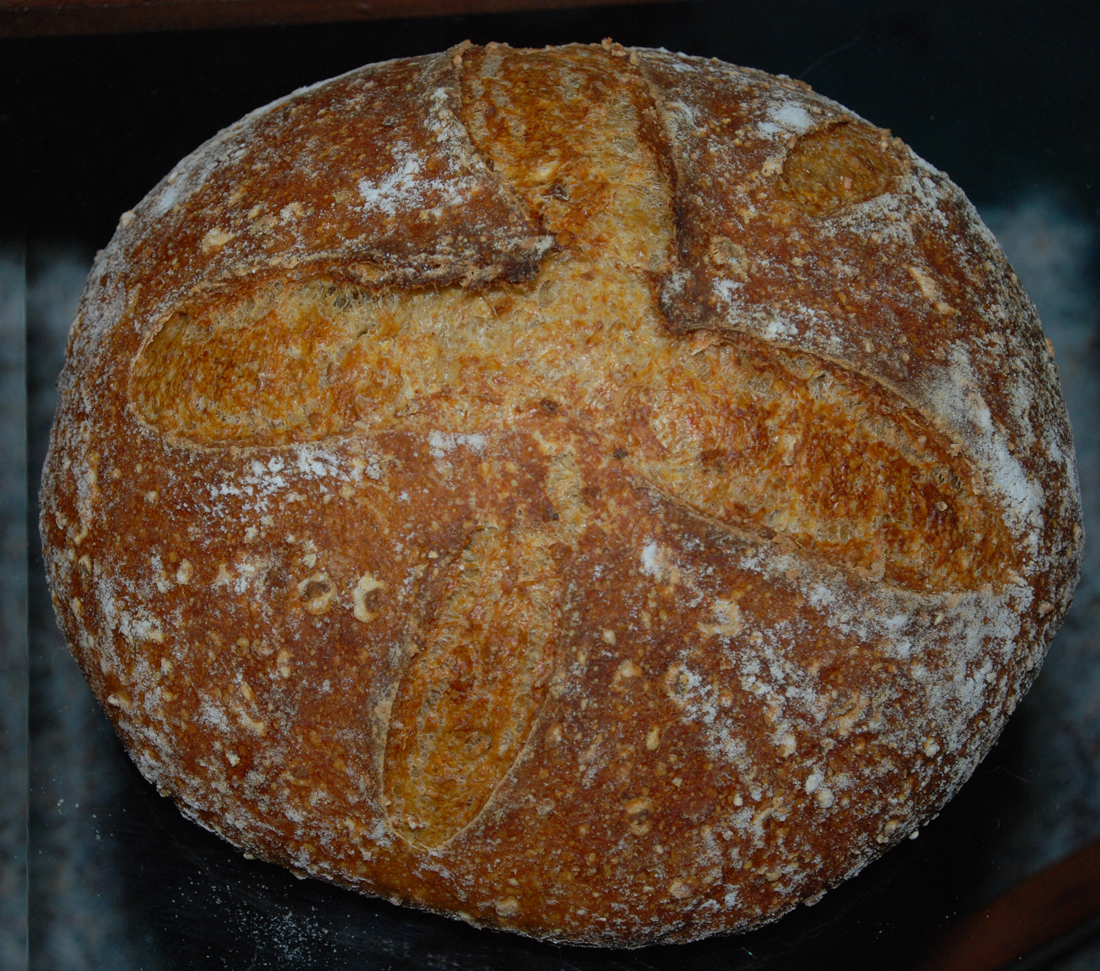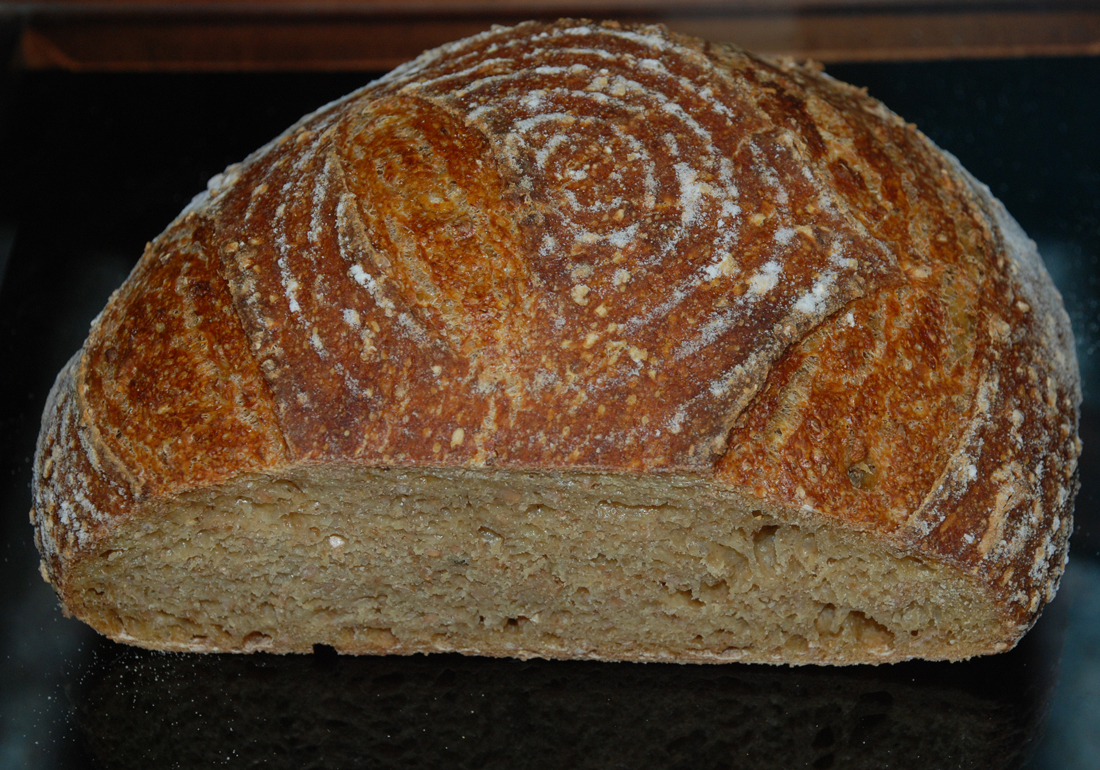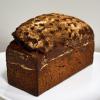 The last time I made Ciabatta I made a sourdough version that came out quite good. In my never-ending quest to try to create something new and hopefully great tasting I came up with the concoction below.
The last time I made Ciabatta I made a sourdough version that came out quite good. In my never-ending quest to try to create something new and hopefully great tasting I came up with the concoction below.
I decided to go with a straight forward yeasted version of Ciabatta but I wanted to get more flavor in the final product. I happen to love onions, so I figured why not add some carmelized onions and to get some stronger wheat and nuttiness flavor in the bread I decided to use some spelt and rye flour along with a low protein French style flour from KAF. This combination resulted in by far the best Ciabatta bread I have ever made or tasted in my not so humble opinion :).
I followed the standard operating procedures from Peter Reinhart's Artisan Breads Everyday for the Pain a L'Ancienne Rustic Bread and modified the ingredients as mentioned above. The only thing I would change maybe is to add some cheddar cheese next time which would really put this one over the top.
You can really taste the onions and the rye-spelt mixture and the open crumb was nice and moist.
If you give this one a try I would love to hear what you think.
Here are the ingredients and procedure I followed:
Ingredients
13 oz. KAF French Style Flour (you can use All Purpose if you don't have French Style)
4 oz. Medium Rye Flour
3 oz. Spelt Flour
16 oz. Ice Cold Water (55 degrees F.)
0.4 oz. Salt (1 3/4 Tsp.)
.14 oz. Instant Yeast (1 1/4 Tsp.)
1 Tbs. Olive Oil
17.5 oz. Carmelized Onions
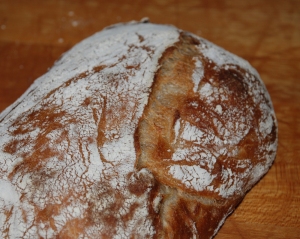
Directions
Cut up half of a medium size sweet onion and saute for 5-8 minutes on medium low in a frying pan or bake on a sheet pan in your oven. Let the onions cool before adding them to the dough.
Add all the ingredients into the bowl of your mixer except the onions and stir for 1 minute on the lowest speed. The dough should be rather sticky and rough at this point. Let it rest for 5 minutes in the mixer bowl.
Add the cooled onions and mix on medium low using your paddle attachment for one minute. In my case I have a Bosch which only has one mixing/kneading attachment. The dough will still be very sticky but should very soft and much smoother. Transfer the dough to a lightly oiled bowl using a dough scraper or spatula. Cover the bowl and let it rest for 10 minutes.
After 10 minutes transfer the dough to a lightly oiled work surface. Make sure you oil your hands and do a stretch and fold on all sides of the dough and flip it over and form it into a ball. Put the dough back in the bowl and let it rest for another 10 minutes at room temperature. Do this stretch and fold process three more times over the next 30 to 40 minutes. You can do the stretch and fold in the bowl itself if you prefer. I personally like to do it on the counter.
After you do the last stretch and fold put it back in the bowl and cover it tightly and refrigerate overnight or up to 4 days. The dough should rise to almost 1 1/2 its size in the refrigerator.
Take the dough out of the refrigerator at least 3 hours before you plan to bake and let it sit at room temperature. Around 1 hour after taking the dough out of the refrigerator, place a large piece of parchment paper either on your work area or the back of a baking pan and dust with flour to cover it completely. Using an oiled or wet dough scraper gently remove the dough to the work surface. You want to be very careful so you don't degas the dough and kill the big air holes you want to achieve.
Flour your hands and lightly dust the top of the dough. Use your hands and a metal dough scraper and form the dough into a 9" square and be very careful again not to manhandle the dough and degas it.
Next, cut the dough into either 3 small ciabatta or 2 larger size loaves. I opted to go with the 3 smaller size ones.
Gently fold the individual dough pieces into thirds like an envelope. Make sure to be very careful and not to apply any pressure. Roll the folded dough in the flour to coat it and lift it onto the parchment paper and roll it in the flour again. Rest the dough seam side down and repeat with the other piece(s) of dough.
Spray the tops of the dough with oil (I use a baking spray) and cover the pan with plastic wrap very loosely. You can also use a clean lint free kitchen towel.
After 1 hour of resting, roll the dough pieces very gently so the seam side is now facing up and lift them with your floured hands to coax them into either a 7" rectangle if making the larger size or 5" rectangle. Try to get them to be as close to a rectangle shape as you can when you put them back down on the parchment paper.
Let them rest covered loosely again for 1 hour.
About 45 minutes before baking, pre-heat oven with baking stone (I use one on bottom and one on top shelf of my oven), to 550 degrees F.
Place an empty pan in bottom shelf of your oven or a cast iron skillet.
Pour 1 cup of boiling water into pan and place loaves into oven. I also spray the side walls of the oven with water 2 to 3 times for added steam.
Lower oven to 450 Degrees and bake for 12 minutes and rotate the bread and bake for an additional 15 to 20 minutes until bread has a nice golden brown crust and the internal temperature reaches 200 degrees. The bread should have puffed up a little and should be hard when you tap it.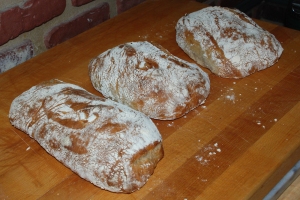
Let it cool on a wire rack for 45 minutes (good luck waiting that long!) and enjoy!
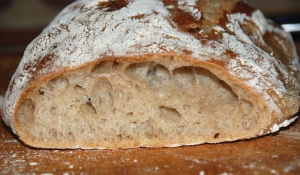
The bread should have nice large irregular holes and should be soft after cooling.
This post has been submitted to the Yeast Spotting Site here: http://www.wildyeastblog.com/category/yeastspotting

